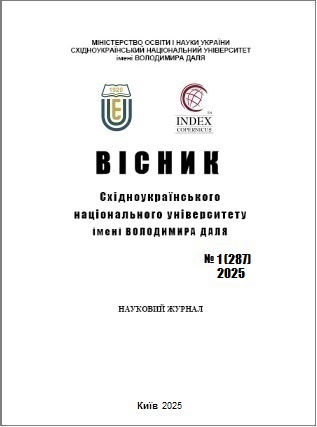Assessment of the impact of BIM technologies on the development course of the oil and gas industry
DOI:
https://doi.org/10.33216/1998-7927-2025-287-1-21-29Keywords:
BIM technologies, oil and gas industry development course, information management, technology impact, digital transformation, innovation, optimizationAbstract
This scientific article provides a comprehensive analysis of the impact of Building Information Modeling (BIM) technologies on the modern course of development in the oil and gas industry, highlighting the significance of implementing these technologies across various aspects of the sector. The article examines both current and future challenges faced by the oil and gas industry amid increasing project complexity and stringent efficiency and environmental sustainability requirements. Special attention is given to analyzing the impact of BIM on all stages of project life cycles, from conceptual design and planning to construction, operation, and asset management. The study reveals how digital technologies contribute to improving forecasting accuracy, optimizing resources, reducing costs, and mitigating risks during project implementation in the oil and gas sector. Additionally, it explores the integration of BIM with traditional project and asset management processes in the industry, as well as its potential to achieve more sustainable and efficient operations. Furthermore, the study examines how the use of BIM enhances occupational safety, monitors the technical condition of assets, and ensures compliance with environmental regulations—an aspect of increasing importance in today's global agenda. A separate section is dedicated to analyzing potential obstacles to BIM implementation, including technological, organizational, and financial barriers, and discussing strategies for overcoming them through business process adaptation and workforce upskilling. The study identifies key challenges such as the high cost of adopting new technologies, the necessity for corporate culture changes, and the integration of BIM with existing digital platforms. At the same time, the research underscores the importance of a strategic approach to BIM implementation, which should include the development of a regulatory framework, the advancement of educational programs for industry professionals, and the introduction of continuous performance monitoring systems. The article provides detailed recommendations for the strategic implementation of BIM in the oil and gas sector, considering the rapid advancement of technologies and changes in the regulatory landscape. It also highlights possible future development paths for this technology, its role in ensuring the resilience and efficiency of oil and gas projects, and its contribution to fostering a more transparent and integrated approach to asset management. Additionally, the prospects of using BIM in combination with other cutting-edge technologies such as Artificial Intelligence (AI), the Internet of Things (IoT), and Big Data are explored, enabling the creation of digital twins of assets and real-time performance forecasting. Ultimately, the article presents a vision for the future of the oil and gas industry in the context of active BIM technology adoption, expanding the boundaries of possibilities for this critically important sector. The study’s findings may be valuable to researchers, engineers, business leaders, and government organizations involved in developing strategies for the oil and gas sector’s growth, aiming to enhance its efficiency and global competitiveness.
References
1. LinkedIn. URL: https://www.linkedin.com/pulse/ unlocking-potential-bim-transforming-oil-gas-epc-ñwògu-mba-pmp--zwfnf/?trk=public_post_main-feed-card_feed-article-content (дата звернення: 15.04.2024).
2. DIASPHERE. URL: https://diaspherebim.com/ service/building-information-modeling-in-oil-and-gas/ (дата звернення: 15.04.2024).
3. Waqar A, Othman I, González-Lezcano RA. Challenges to the Implementation of BIM for the Risk Management of Oil and Gas Construction Projects: Structural Equation Modeling Approach. Sustainability. 2023; 15(10):8019. https://doi.org/10.3390/su15108019.
4. Shaocong Pang, Luo Zhao, Yuxiu An, Advanced developments in nanotechnology and nanomaterials for the oil and gas industry: A review, Geoenergy Science and Engineering, Volume 238, 2024, 212872, ISSN 2949-8910, https://doi.org/10.1016/j.geoen.2024.212872. (https://www.sciencedirect.com/science/article/pii/S2949891024002422).
5. EPCM Holdings. URL: https://epcmholdings.com/building-information-modeling-in-oil-and-gas/ (дата звернення: 02.03.2024).
6. Fridrich, Jan & Karel, Kubečka. BIM – The Process of Modern Civil Engineering in Higher Education. Procedia - Social and Behavioral Sciences. 2014. 141. 763-767. 10.1016/j.sbspro.2014.05.134.
7. Shell. URL: https://www.shell.com/what-we-do/oil-and-natural-gas.html (дата звернення: 15.04.2024).
8. ExxonMobil. URL: https://corporate.exxonmobil.com/who-we-are/technology-and-collaborations/digital-technologies (дата звернення: 10.06.2024).
9. BP. URL: https://www.bp.com/en/global/corporate/what-we-do/oil-and-gas.html (дата звернення: 15.04.2024).
10. Chevron. URL: https://www.chevron.com/what-we-do/technology-and-innovation (дата звернення: 15.04.2024).
11. Kensek, K., & Nobuyuki, O. Building Information Modeling: Planning and Managing Construction Projects with 4D CAD and Simulations. McGraw-Hill Professional. 2010.
12. PROFOUNDPROJECTS. URL: https://profoundprojects.com/services/consultancy/building-information-modeling/ (дата звернення: 02.03.2024).
13. Pinto, J. K., & Slevin, D. P. Critical factors in successful project implementation. IEEE Transactions on Engineering Management, 1987. (1), 22-27.
14. Schwalbe, K. Information Technology Project Management. Cengage Learning. 2018.
15. Alyguliev, Ramiz & Alakbarova, Irada. BIG DATA problem in oil and gas industry: current state and prospects. INFORMATION TECHNOLOGIES. 2016. 862– 869.
16. PlanRadar. URL: https://www.planradar.com/ ru/bim-tekhnologii-v-stroitelstve/ (дата звернення: 15.04.2024).

